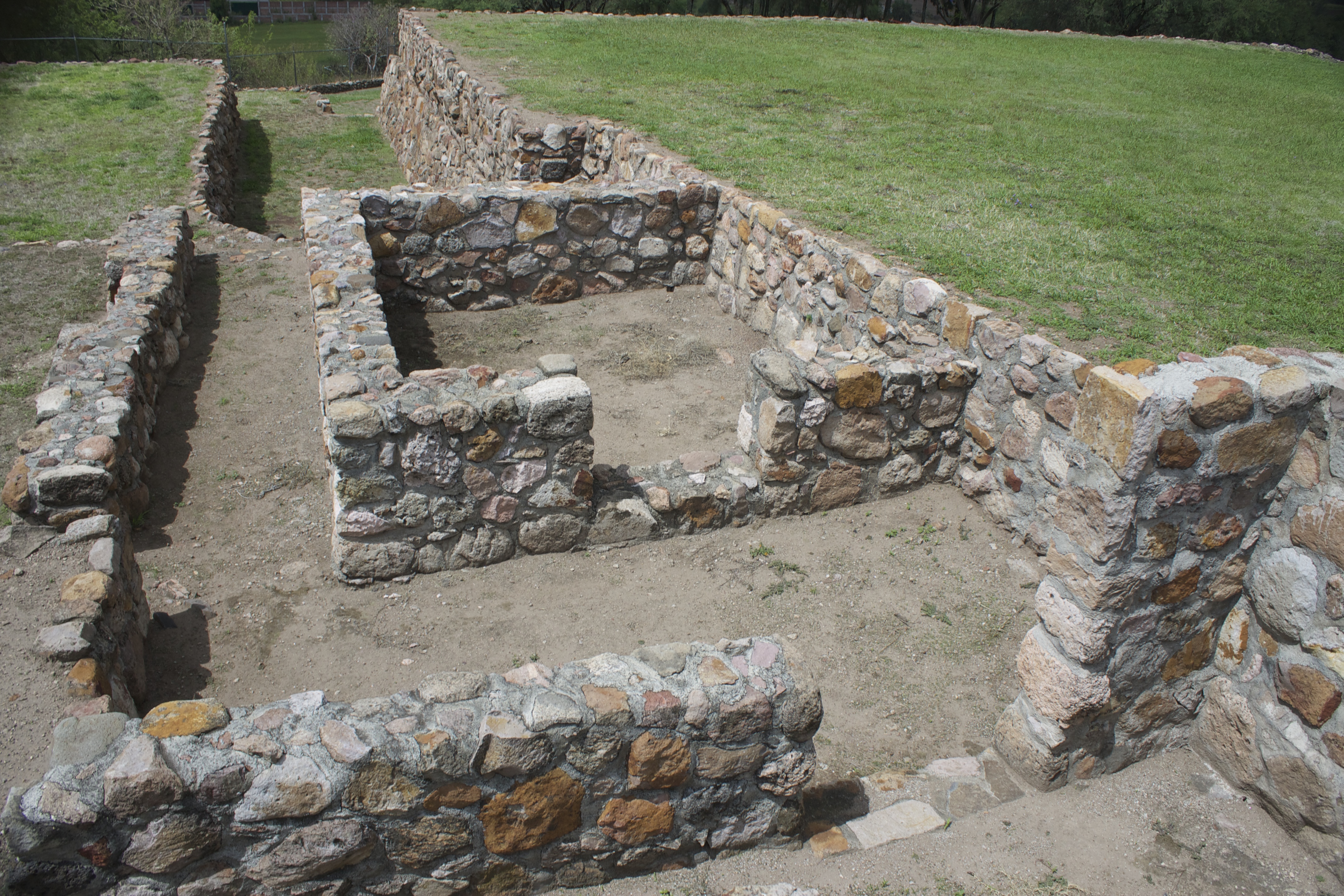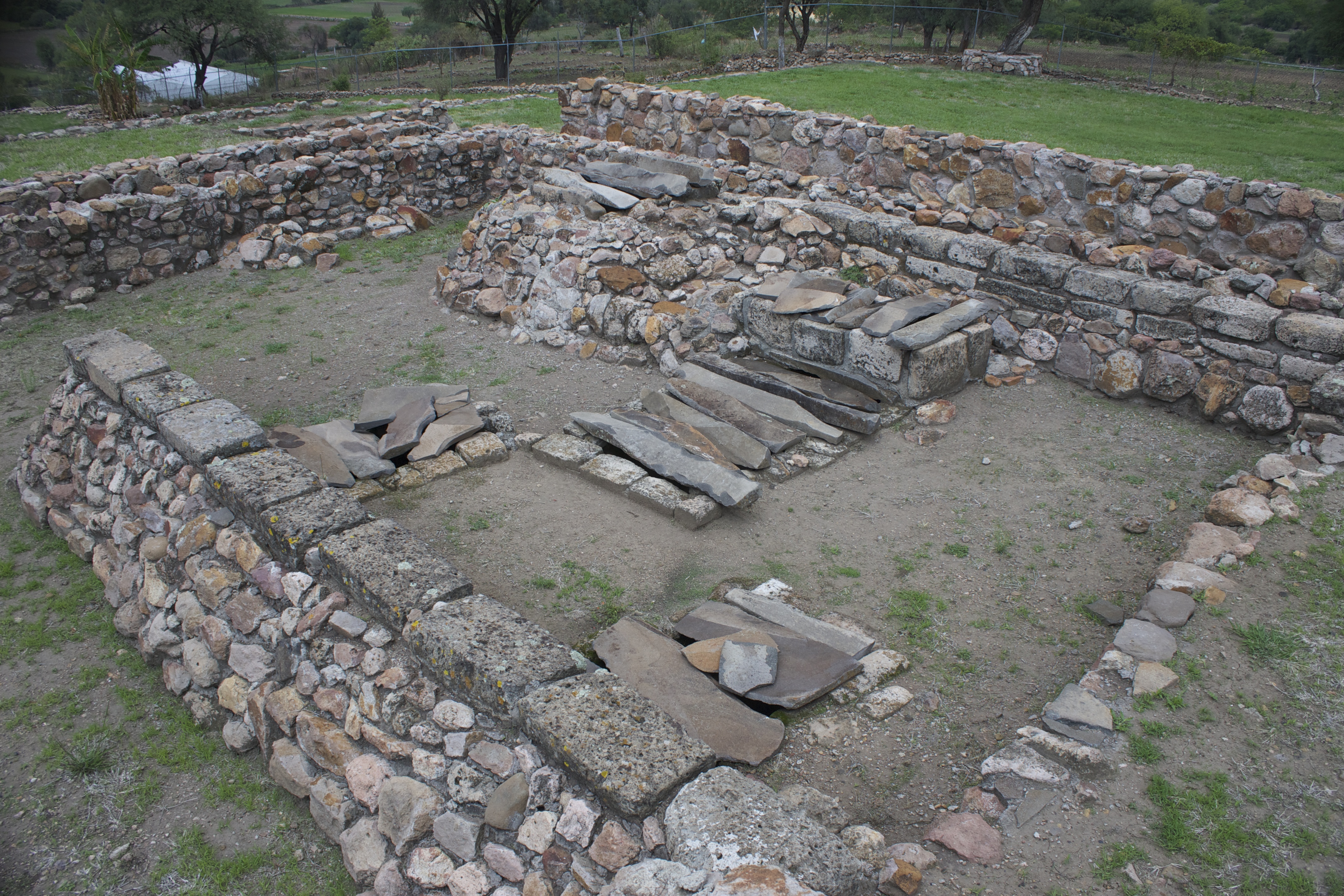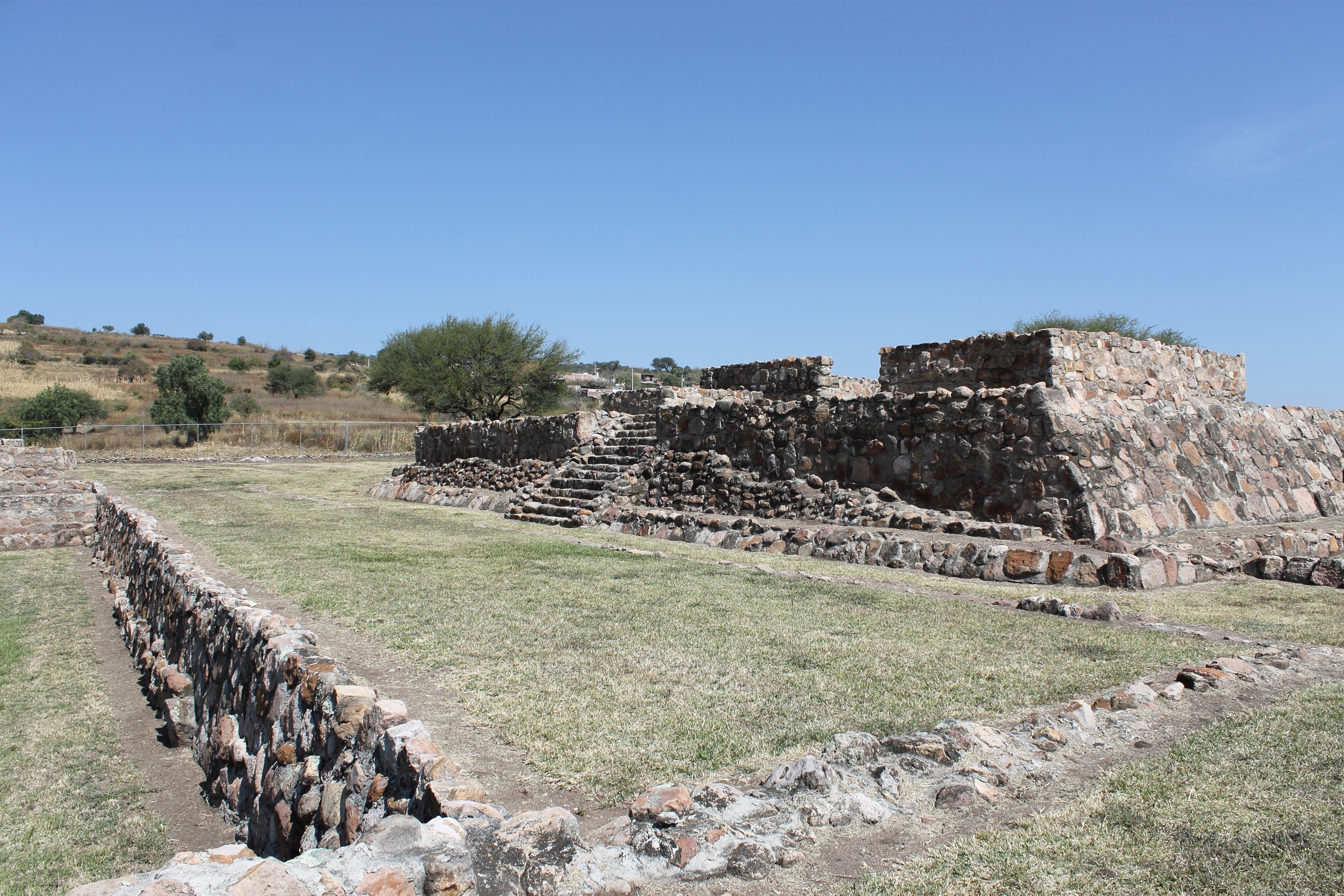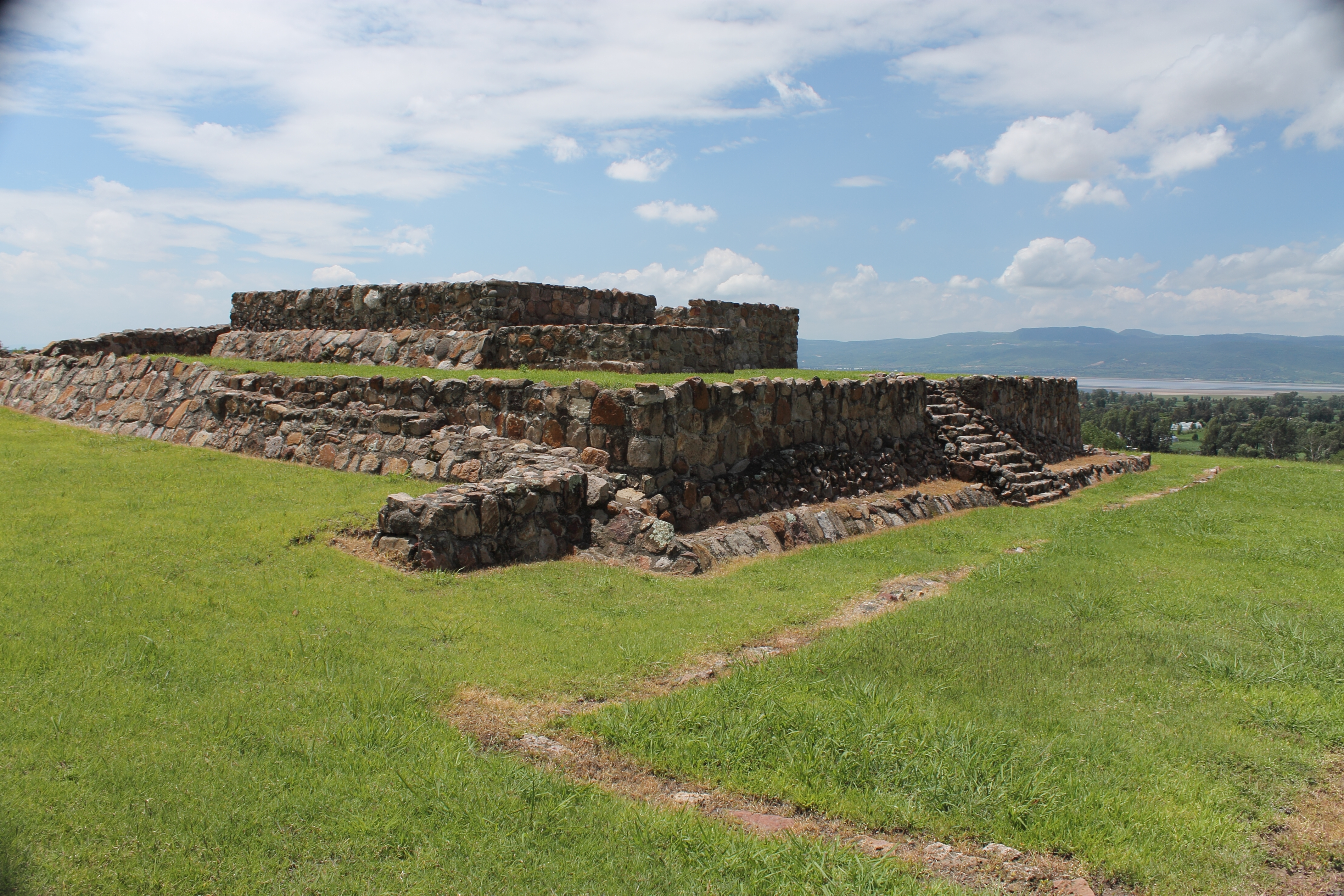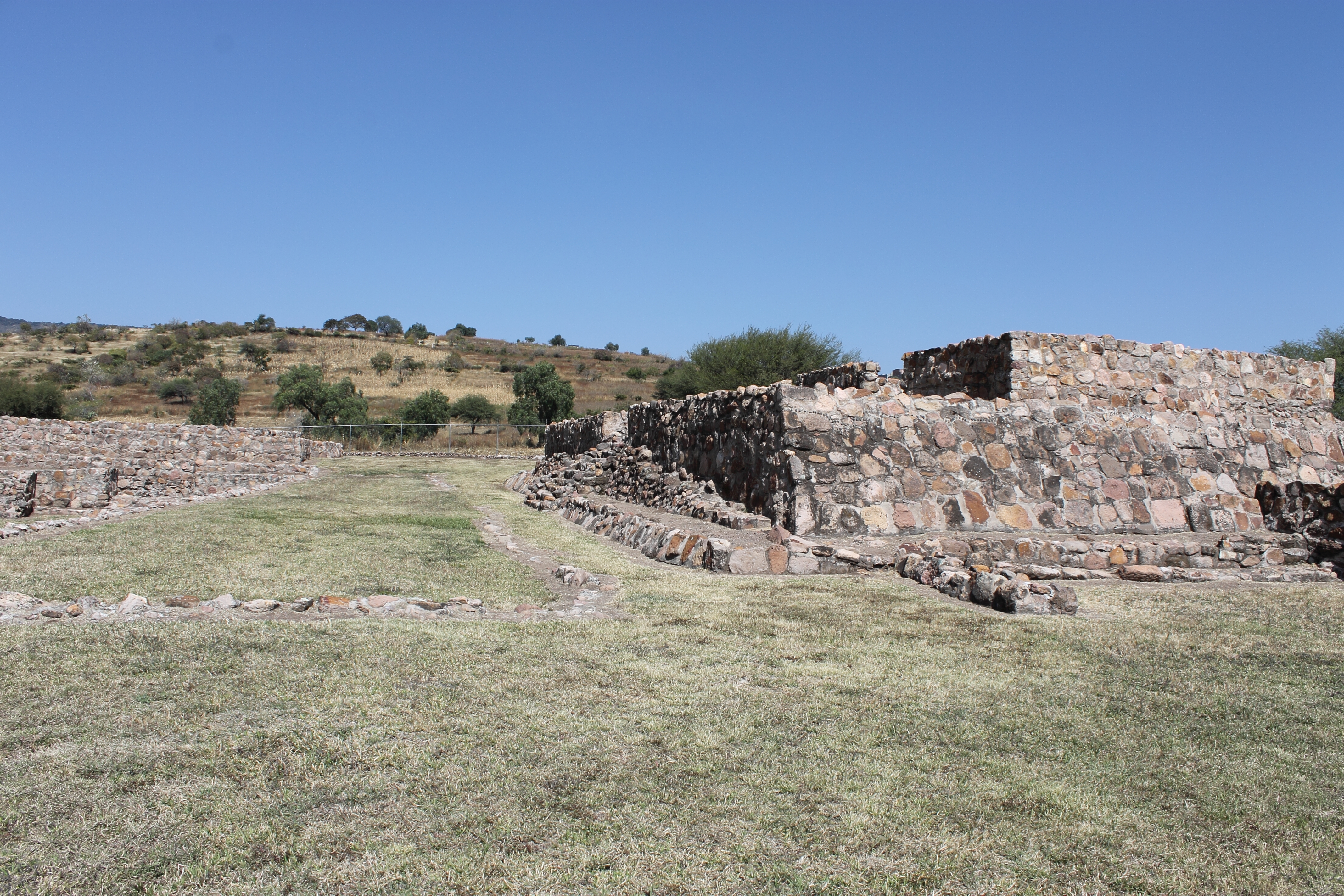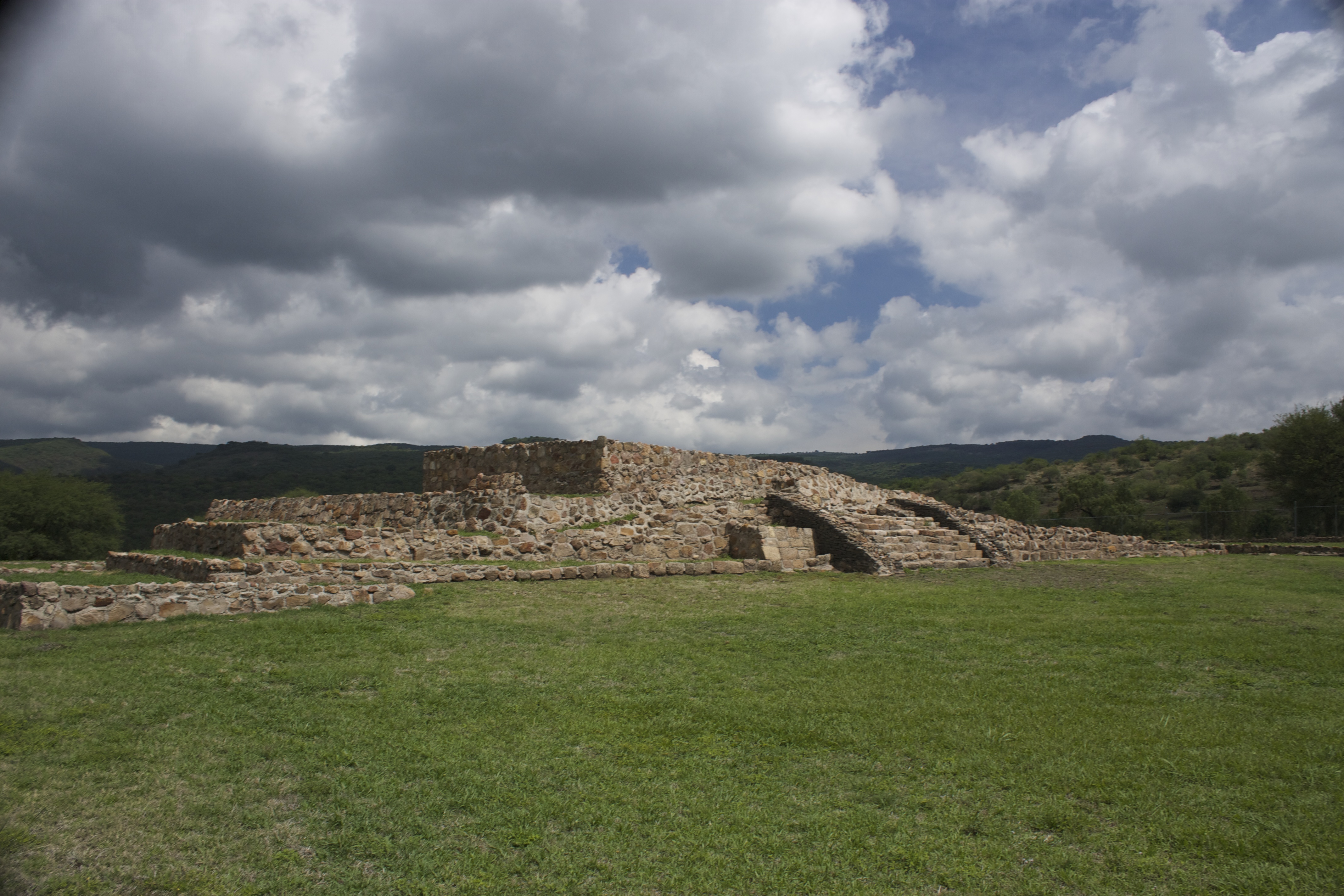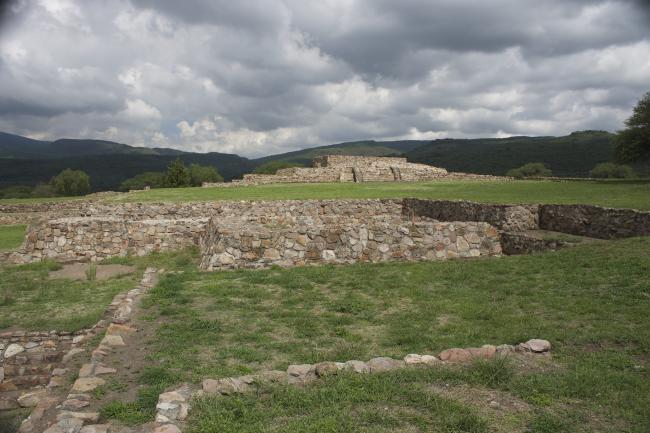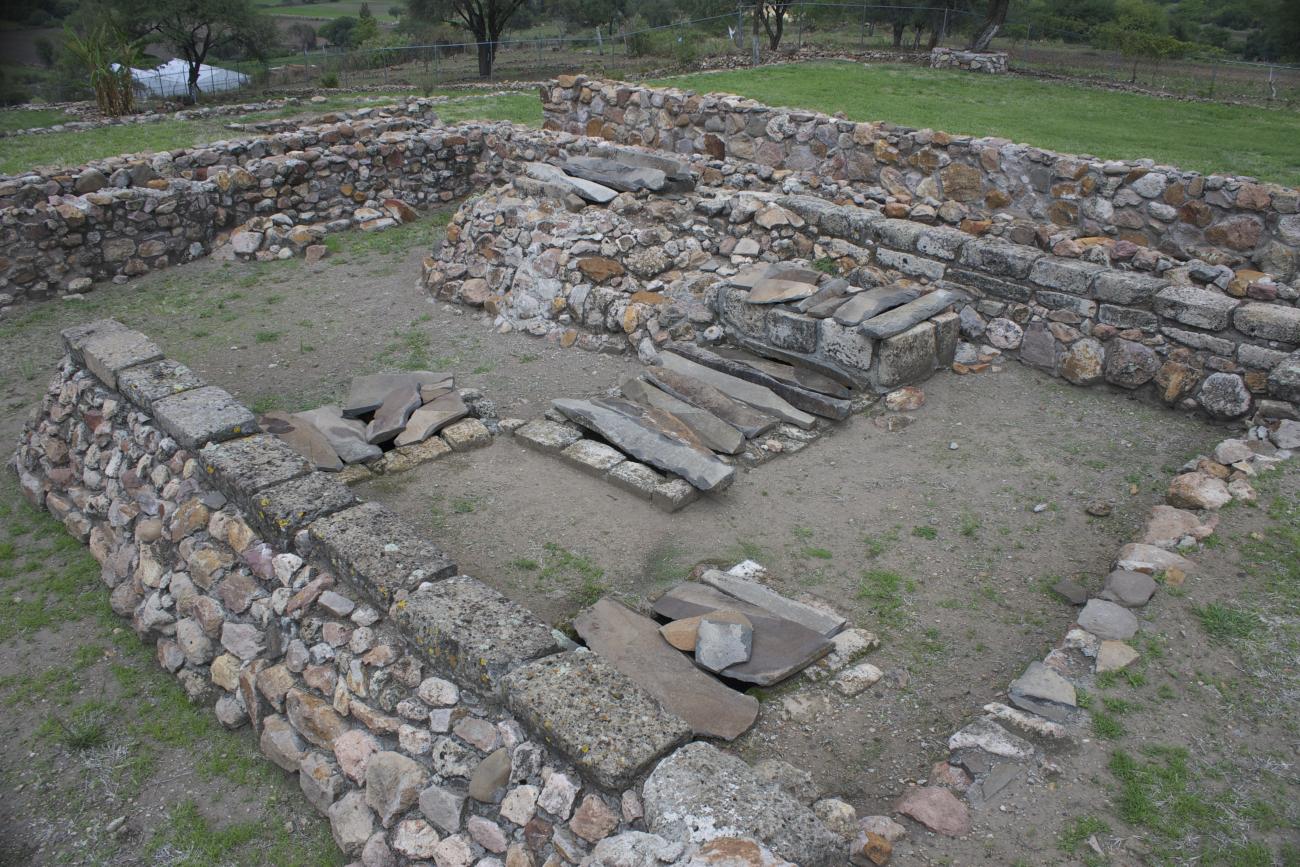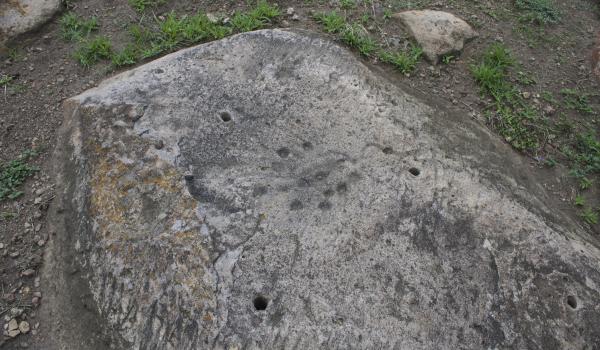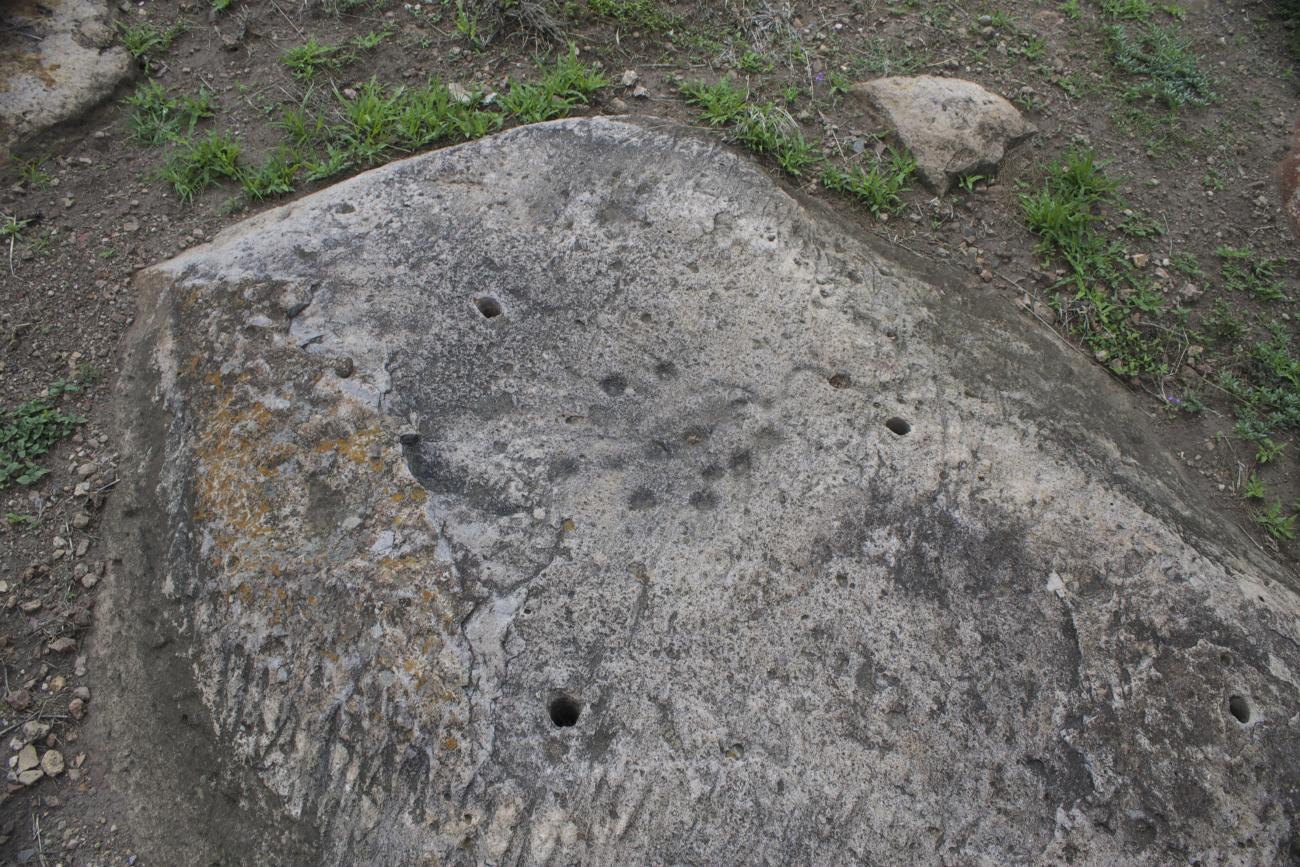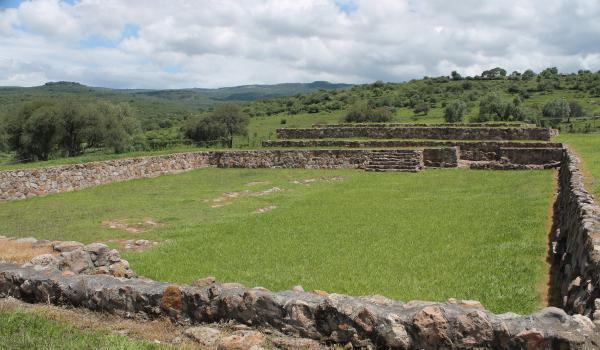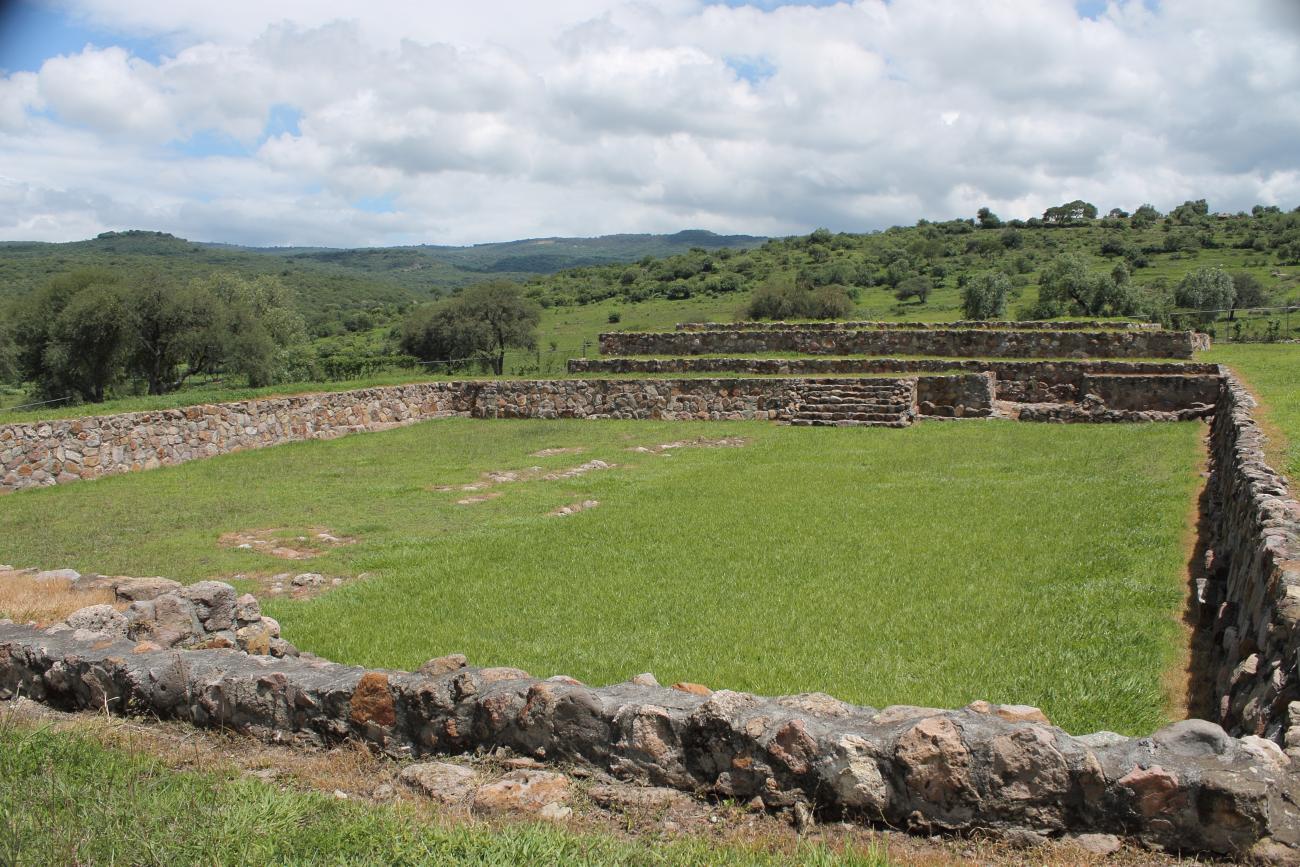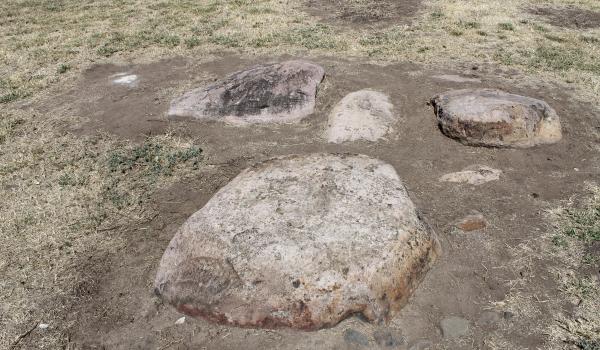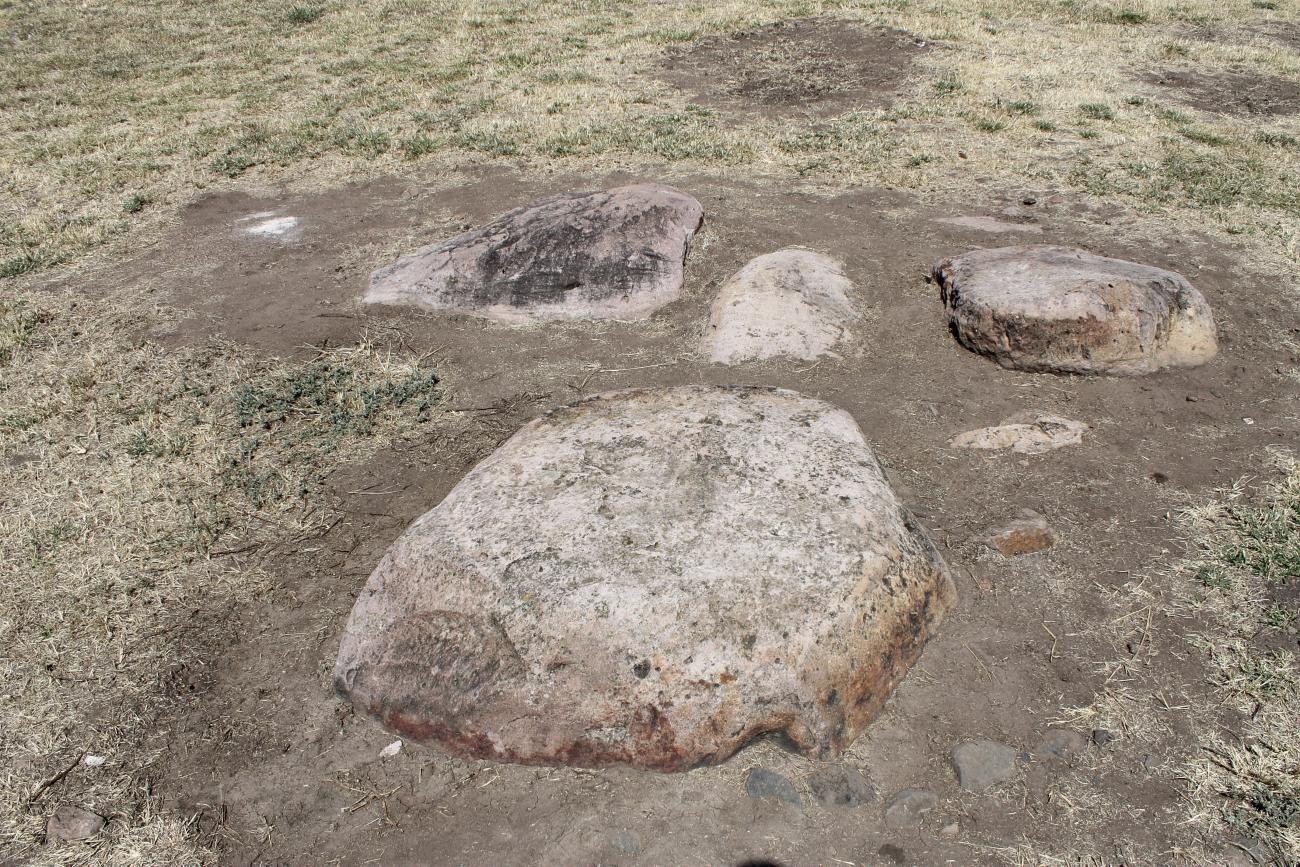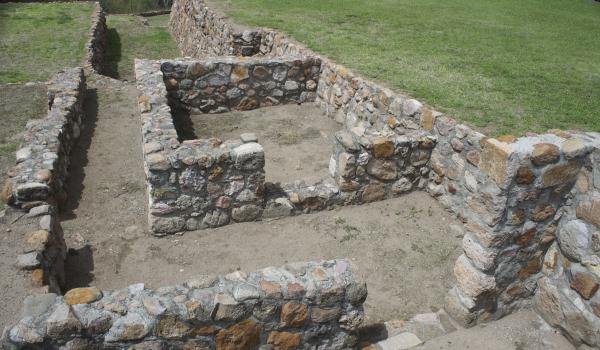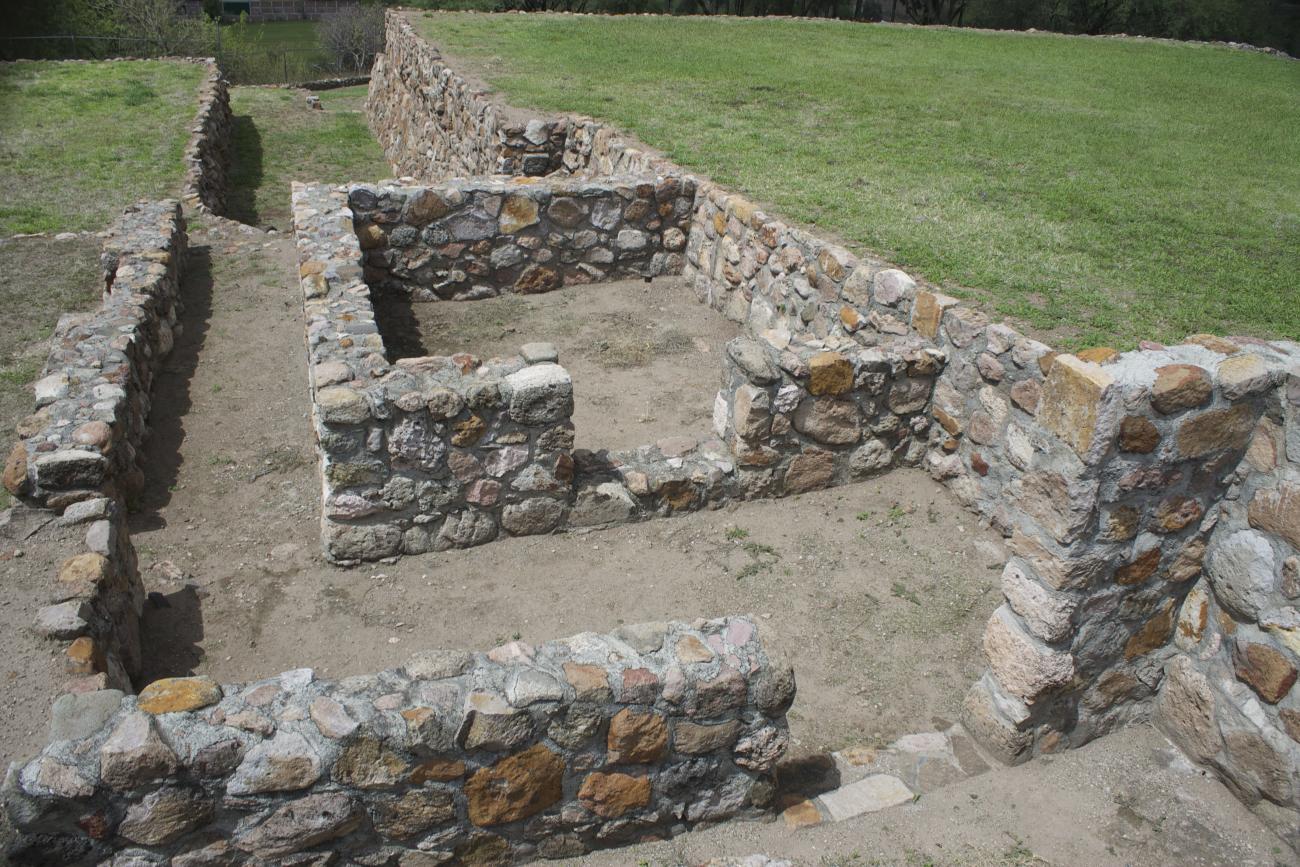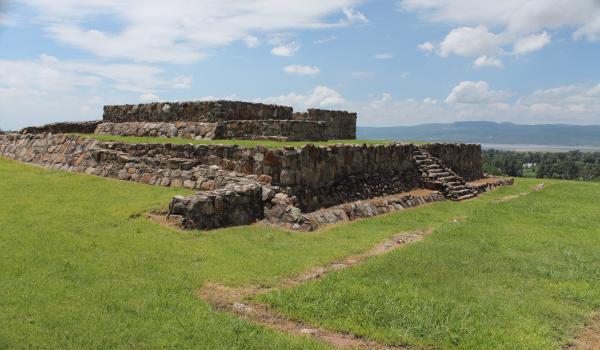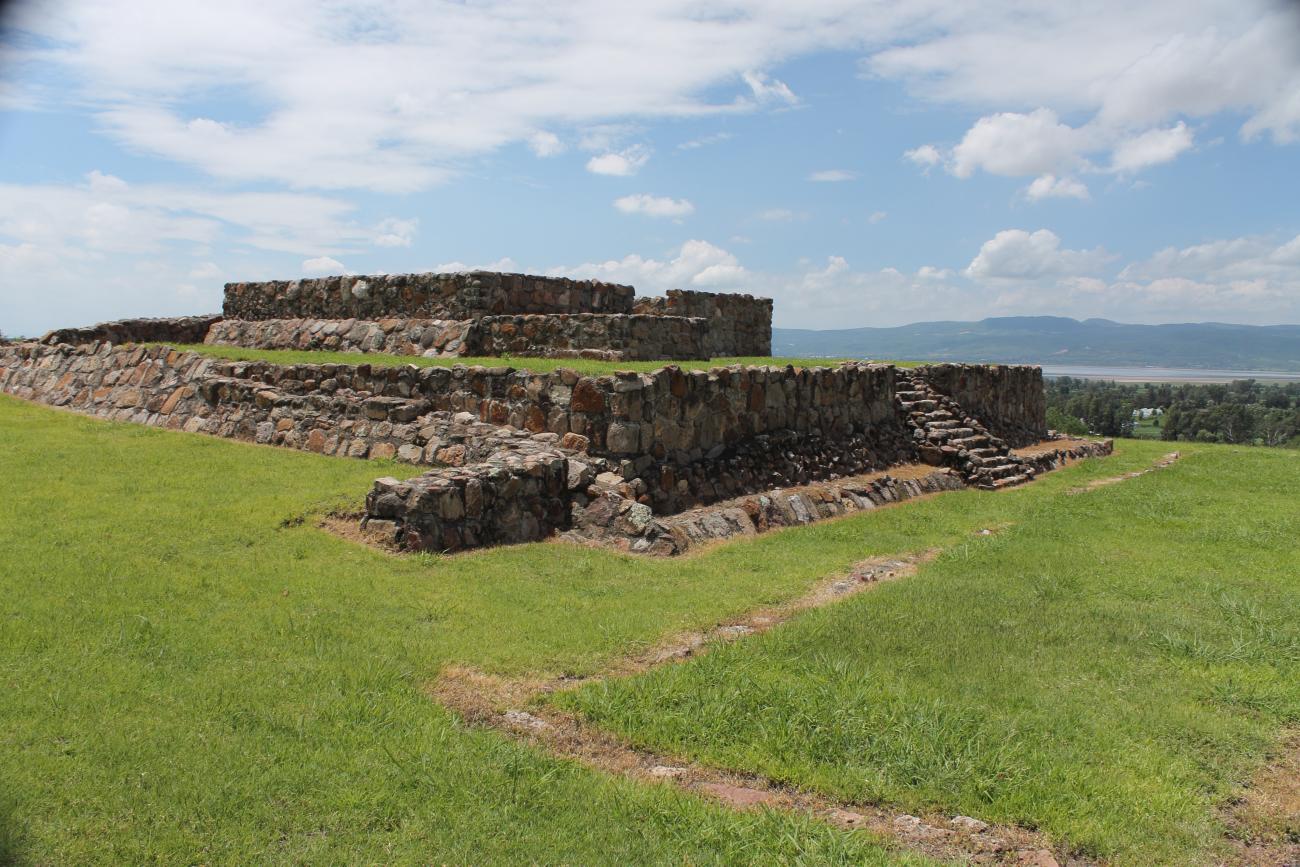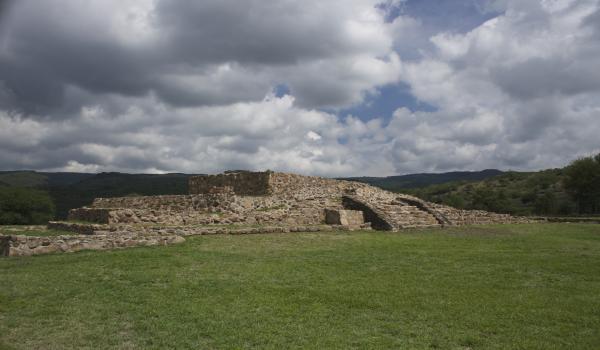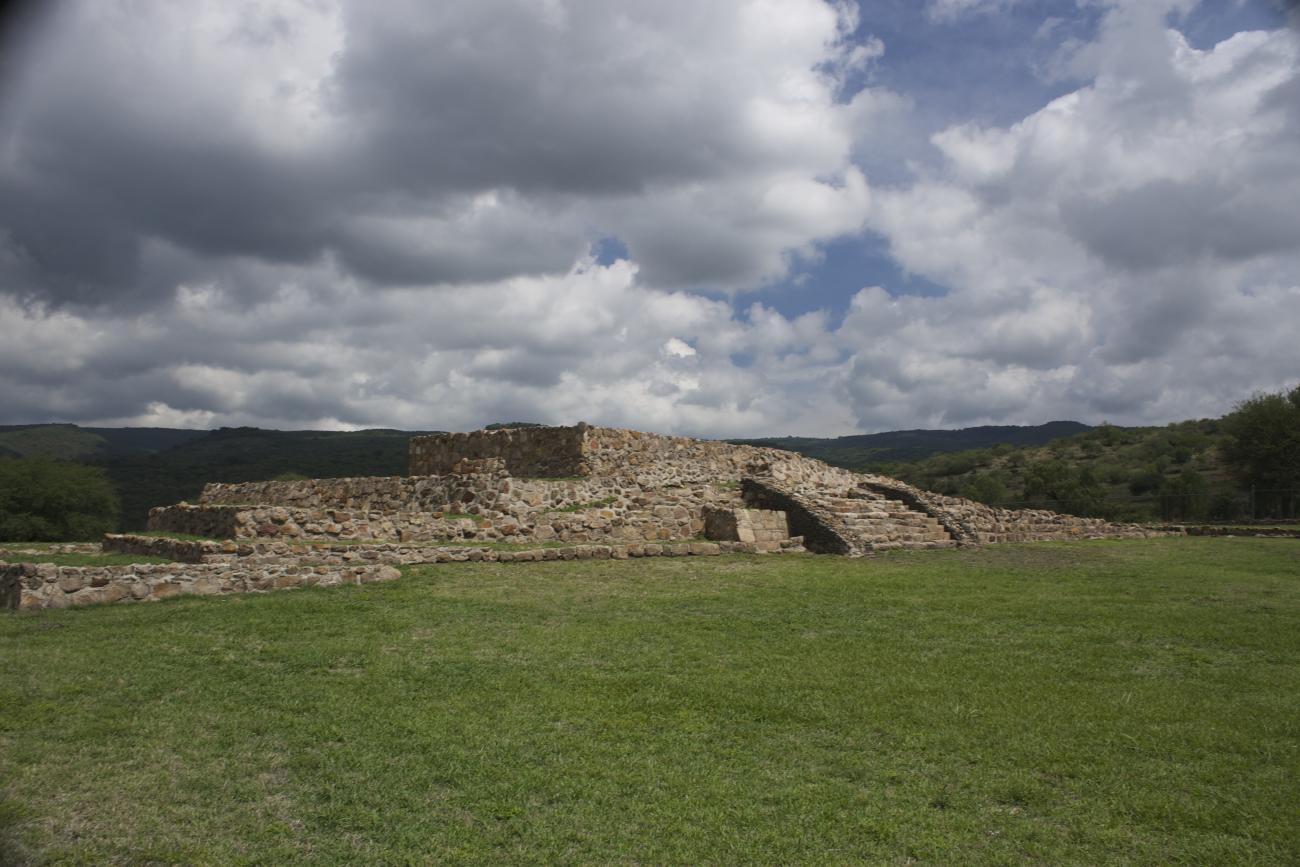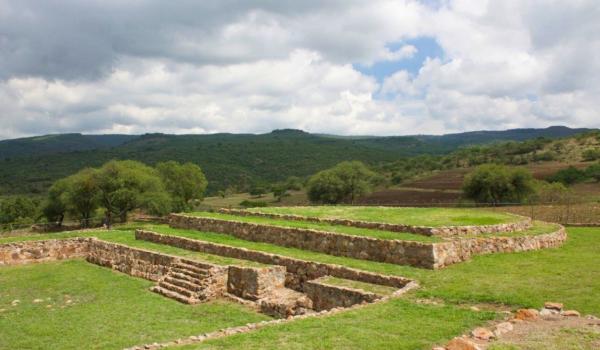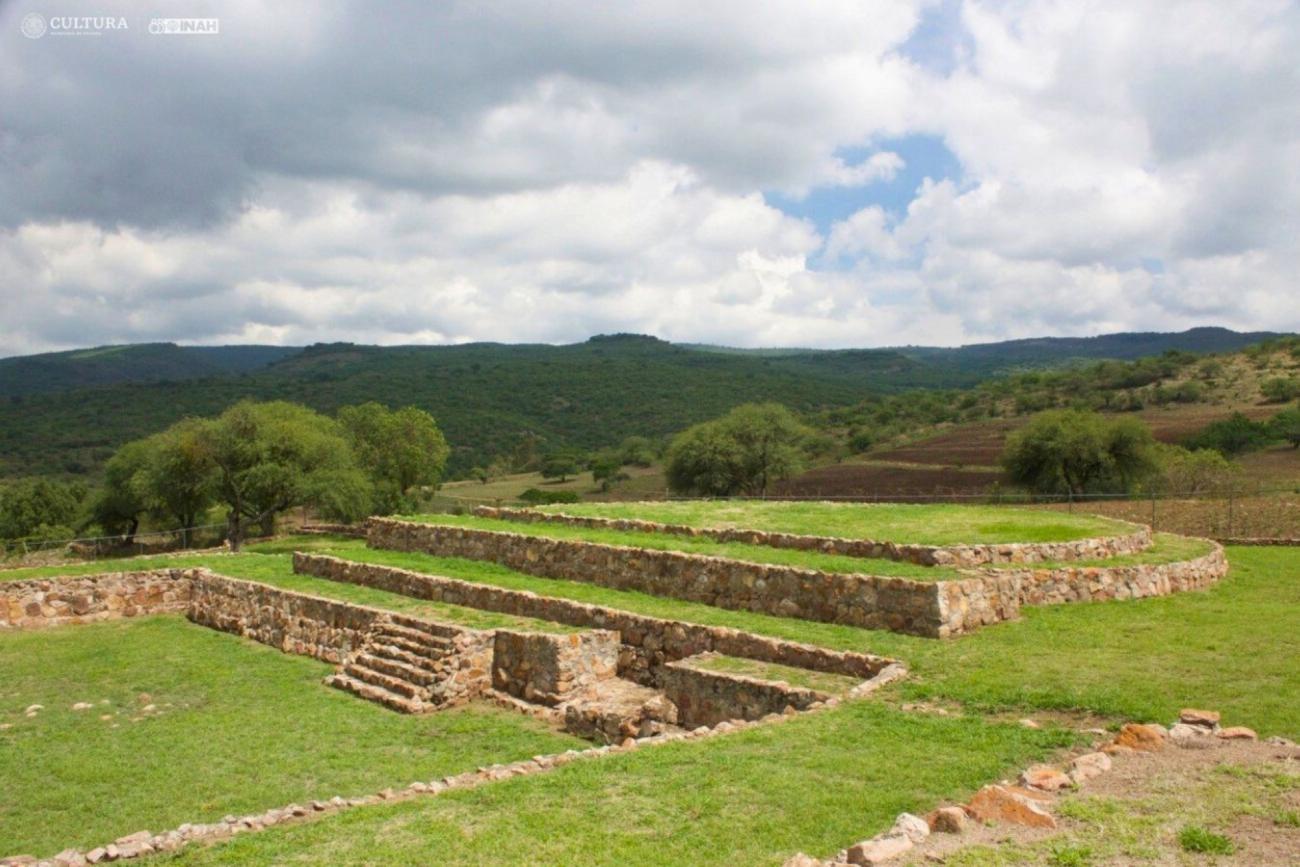Huandacareo, or “La Nopalera,” is located on a hill to the northeast of Cuitzeo Lake. An important aspect of its construction were the earthworks needed to form its retaining walls, and a large amount of infill material also had to be moved. This is an excellent example of maximizing available land, since although the walls we can see—especially in the southeastern sector—might not seem to serve any purpose today, they actually prevented the collapse of the heavy surface structures they were supporting. Furthermore, this would also have required a large workforce to construct these spaces.
Archeological work has revealed that there were at least two very distinct stages of occupation of the area. During the first period, La Nopalera was a typical Cuitzeo lakeside settlement; in other words, it had a small population without any connection to a state or city with power over the area. However, the site preserves elements indicating architectural influence from the Bajío region, such as the sunken patio and various decorated works of pottery. Burial sites also were found in the southwestern sector, with pottery showing patterns and motifs inspired by Teotihuacan, the mighty metropolis of central Mexico, and some of the buried people were found to be wearing similar clothes to those worn by inhabitants of the aforesaid city. This indicates that the region was a melting pot for a number of different cultural traditions which maintained their own identities.
Early in the second millennium AD, La Nopalera began to be used as a seat of government for the Tarascan state; the spaces were modified in a number of ways, different methods were used for the burials, and new technologies began to appear, as shown by the use of copper. Archeological records reveal that the site had been abandoned for some time before being altered by its new occupants.






